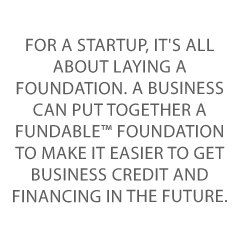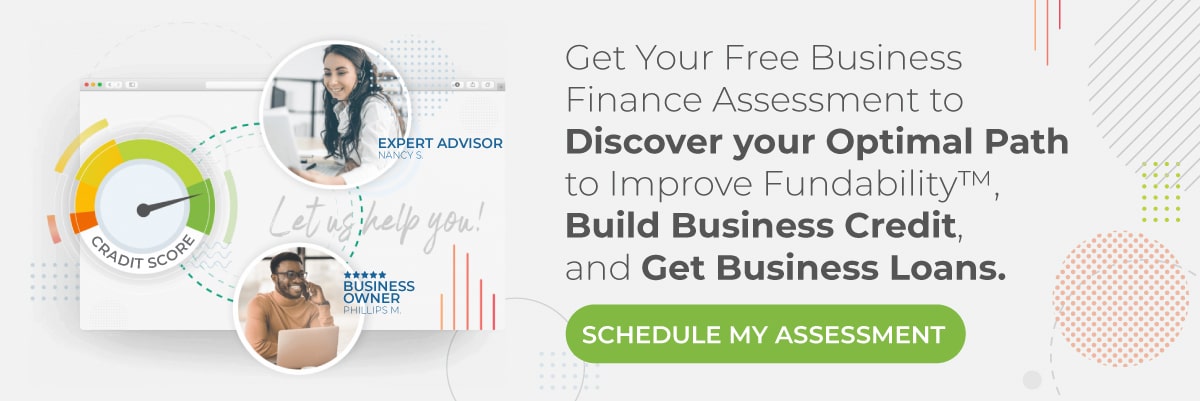If you have been wondering what an agile business actually is, and what it can do for you, then this blog post is for you.
And the best part of agile business management is it can be the kind of philosophy that you apply to business credit and financing as well.
An Agile Business vs an Adaptive Business — What are the Differences?
They’re actually not too different.
Business Strategy on the Adaptive Side
According to the Harvard Business Review,
In addition to changing the way in which they conduct experiments, companies need to broaden the scope of their experimentation. Traditionally, the focus has been on a company’s offerings—essentially new products and services. But in an increasingly turbulent environment, business models, strategies, and routines can also become obsolete quickly and unpredictably.
Adaptive companies therefore use experimentation far more broadly than their rivals do.
Essentially, adaptive businesses will check metrics to determine what to do and how to react to market forces and other conditions continually changing around them.
Agile Business Management from Early Stages and On
Agile organizations, on the other hand, have five essential characteristics. Per McKinsey & Co, agile organizations continually compare themselves to the competition. They will change as needed in order to gain or regain a competitive advantage. These companies keep a network of empowered teams, so they don’t have to go through a lot of bureaucracy every time they need to go from zigging to zagging.
These organizations have rapid decision and learning cycles. They reflect a dynamic people model that reflects passion. In essence, their employees are excited. And to get it all done, such businesses embrace next-generation enabling technology.
In essence, agile tends to be about the software development process. But adaptive is a strategy which affects everything in a business.
The two are not mutually exclusive.
Software and Other Development Processes: the Old Days
It used to be that software was developed using what was called the waterfall model. A company might decide on January 1, 1990, to change something or other. The development team would get their marching orders and start working. They would go over their new ideas and produce everything from design documents to prototypes.
Lower level business management would review the design phase and perform research. They would hash out design changes and anything else they felt was needed to make the new product successful.
The product manager would move everything up the chain in the company. Marketing would look at the product.
Everyone would more or less stick to the schedule and keep with the original planning. Managers would sign off (or not). Eventually the team would create a user interface and not too long afterwards, implementation would happen, and the product would go to market.
Project Management Under the Waterfall Model
With this kind of a structured approach, the idea was that a corporation would be able to plan the next few years well. They would know what their clients wanted, and their clients would not change their minds too quickly.
Inevitably, the time frame for a project using the waterfall model was two years. Big or small projects—it never seemed to matter. The time frame for full development always seemed to be two years.
Even if the manager was replaced, the calendar to develop the software or other product would rarely change.
The Development Process with an Agile Development Team
But now, the process has become much more iterative. Rather than reporting on progress perhaps every quarter, a business manager might report every week. Due to this more flexible arrangement, a project can change in mid-stride if the market changes.
Unlike with the waterfall model, agile leaders and development teams can also respond to the changing needs of clients. They can support new customer needs and change a project in mid-stride.
Business management is no longer be beholden to two year old development planning practices which have become passé. And the estimates for how long a development project and its phases will take can be much better refined. Management will no longer (or at least, a lot less frequently) waste time and money with overestimated time and money budgets.
And business management will scramble a lot less because longer-term development can be better scheduled. Hurrying to meet a practically random two year deadline should stop happening.
Human Resources Under Agile Business Management
Ever since its original implementation, agile has also changed many an industry. Employment needs have changed, so HR has needed to improve their marketing of job postings in order to better attract potential new employees with the right skills.
With growth in a company and change in development focus, HR has had to change their own process to better assure hiring success. Although there will potentially be a slightly different form of hiring process for a given industry.
Accounting, Finance, and Other Areas Under the Agile Process
Financial services are somewhat different in that the process for doing the books isn’t likely to change with every project. However, the process for developing new ways to better serve the company potentially can.
With agile, financing operations can perhaps change the budgeting process. As a project moves through various phases in the lead up to implementation, financing will need to better serve its own internal customer base.
The development of new operations can affect this department, almost as easily as it affects software and product development.
Where Do Business Credit and Financing Come Into Play?
A company with more agile project development phases will need to be nimble when building business credit and obtaining financing, too.
Building Business Credit
Having corporate credit already built will help any company be able to get money when it needs it. As a result, the best time to build business credit is any time. That is, build it before you need it.
Getting Business Financing
The biggest philosophy of agility is flexibility. And this kind of flexibility in development phases can work just as well for deciding on financing. A business may initially think its best financing move is to get a term loan, or for the owner(s) to take out personal loans(s). It may believe the owner(s) should max out their business credit cards or take out home equity loans.
Agile Flexibility
But with a more flexible philosophy, a business owner may be more open to less conventional forms of financing, like merchant cash advances and securities-based lines of credit. They may be more creative when it comes to coming up with collateral, too.
Business Milestones and Software Development Phases are Cut From the Same Cloth
Your business—even if you buy one fully formed and profitable—won’t and can’t spring up from nothing. Just like software, it develops iteratively. Each phase of development builds on the previous one(s). In both areas, overnight successes can take a lot longer than that.
Startup, Setup, and Launch
For a startup, it’s all about laying a foundation. A business can put together a Fundability Foundation™ to make it easier to get business credit and financing in the future.
And for software development, the initial setup is all about planning. Even the most agile business can and does benefit from some degree of planning. Otherwise, the development team has no idea what’s expected of them.
Development Phase
For both, development is perhaps the most iterative time. Whether you’re creating software or running a business, you’re trying out any number of ideas. You want to know what works.
Growth Phase
In software development, in part, this can be about when the customer first gets the product and starts using it. With an agile business model, the team pays attention to how the customer uses the product. Do they like it? Is it useful? Does it work?
With running a business, the growth phase is all about using tested and proven strategies and adapting them to their fullest potential. The business has settled on what it’s selling, who it’s selling to, etc. But an agile business also pays attention to trends and changes. Tomorrow’s great, loyal customer could be today’s skeptical prospect.
Maintaining flexibility means the business can find newer (and perhaps better) sources of revenue when older ones dry up.
Maturity Phase
In a business’s life cycle, this is when success really hits. It gets easier to get financing and credit. As for software development, this is essentially the time when the app or other software is in the market and has well-established market share.
In both instances, the parties may be starting to think of their next moves.
Exit/Sunsetting Phase
For the business, this is when the owner(s) are looking to sell, or perhaps retire. Maybe they’ll go into another industry and try to make it big doing something else. Or maybe they’ll just ride off into the sunset.
And speaking of sunsetting, the software development team is now making decisions on ending the product’s association with their corporation. So, it may be pulling the product from the marketing arena in favor of something better. Or perhaps the developmental unit and its software are sold or spun off (sometimes without the developers).
Business Credit and Financing and Agile Business Management
With both, flexibility is absolutely key. It consists of not just rolling with the punches. It’s also about knowing when to tear the whole thing down. And for both, it’s about working with clients (or lenders) and their input—and learning from mistakes.
Agile Business: Takeaways
Run an agile business and be ready for whatever the world throws at your business. And use agile-style process to build corporate credit by continually striving to improve. Use your feedback and results and build on them.
Business credit and financing can help make any endeavor more agile and adaptive because when you can get more money more or less on demand, you can change what you’re doing with ease. And that’s the essence of an agile business.
And contact us today for a free business finance assessment, so you can run your agile business even better.

